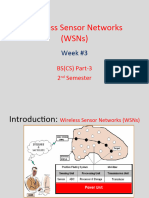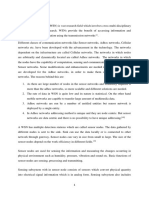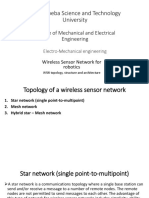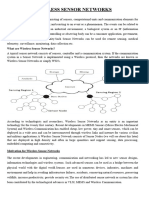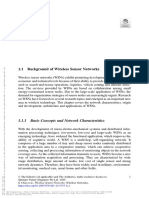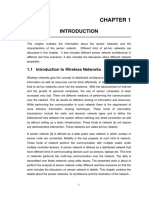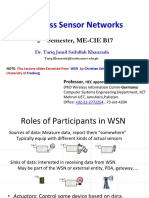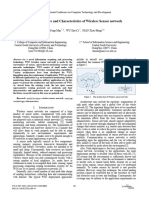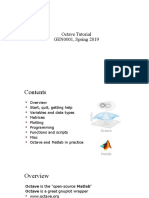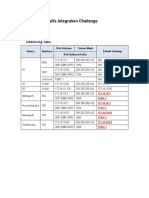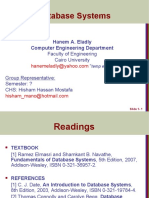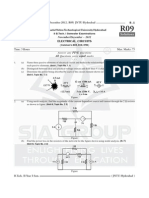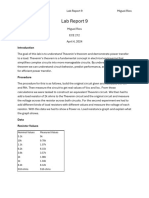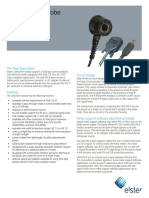0% found this document useful (0 votes)
8 views91 pagesLecture 3
The document discusses Wireless Sensor Networks (WSN), highlighting their architecture, protocols, and operational dynamics. It contrasts WSN with ad hoc networks, emphasizing differences in node deployment, communication patterns, and energy constraints. Additionally, it covers MAC protocols like CSMA/CD and CSMA/CA, detailing their mechanisms for managing data transmission and collision avoidance in wireless environments.
Uploaded by
Nourhan TarekCopyright
© © All Rights Reserved
We take content rights seriously. If you suspect this is your content, claim it here.
Available Formats
Download as PDF, TXT or read online on Scribd
0% found this document useful (0 votes)
8 views91 pagesLecture 3
The document discusses Wireless Sensor Networks (WSN), highlighting their architecture, protocols, and operational dynamics. It contrasts WSN with ad hoc networks, emphasizing differences in node deployment, communication patterns, and energy constraints. Additionally, it covers MAC protocols like CSMA/CD and CSMA/CA, detailing their mechanisms for managing data transmission and collision avoidance in wireless environments.
Uploaded by
Nourhan TarekCopyright
© © All Rights Reserved
We take content rights seriously. If you suspect this is your content, claim it here.
Available Formats
Download as PDF, TXT or read online on Scribd
/ 91














